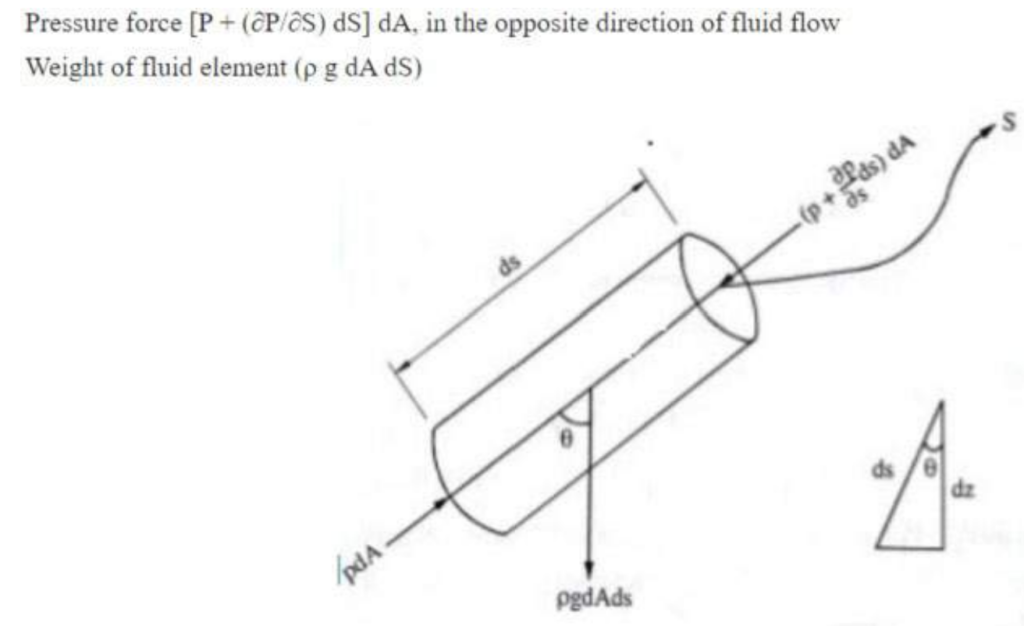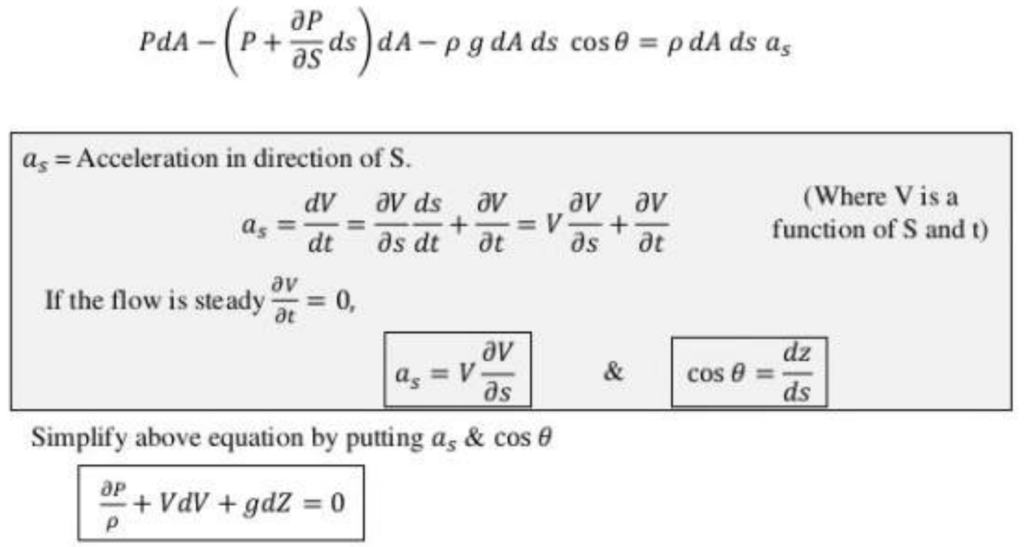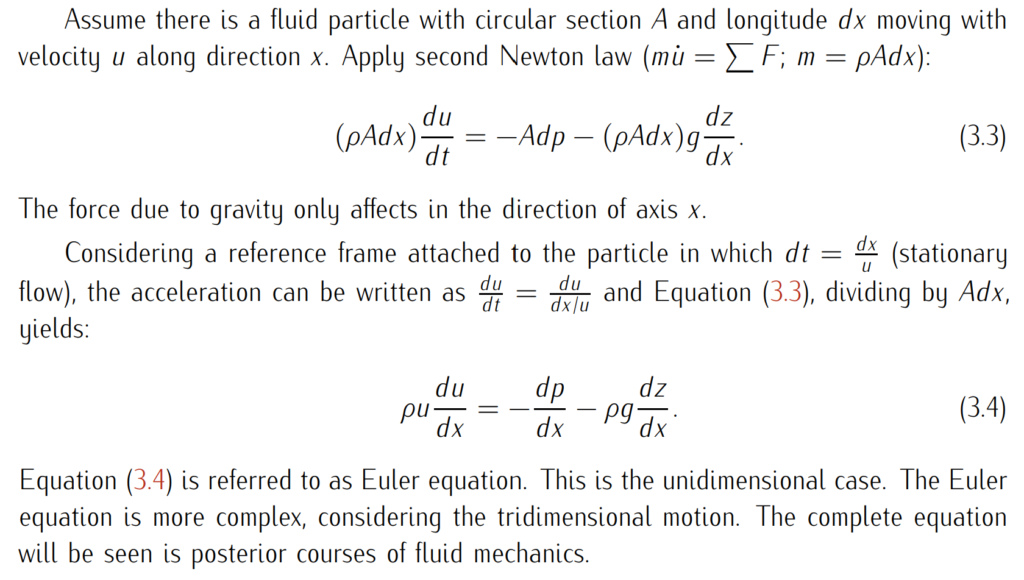Euler equation of motion, derived from Newton’s Second Law of Motion, governs the behavior of fluid flow along a streamline in a steady flow of an ideal fluid. It establishes a relationship between the fluid’s velocity, pressure, and density. When integrated and converted to express energy per unit weight, it yields the Bernoulli equation.
Assumptions in Euler Equation of Motion
Euler Equation of Motion is derived under several key assumptions that simplify the analysis of fluid flow. These assumptions include:
- Non-viscous substance: Euler equation assumes that the fluid under consideration is non-viscous, meaning that frictional losses within the fluid are negligible. In real-world scenarios, this assumption may not hold true for highly viscous fluids or in regions with significant turbulence.
- Uniform and incompressible substance: The equation assumes that the fluid is uniform and incompressible. This implies that the density of the fluid remains constant throughout the flow field. While this assumption simplifies the analysis, it may not be applicable to scenarios involving compressible fluids or where density variations are significant.
- Continuous, steady, and streamlined flow: Euler equation applies to flows that are continuous (without interruptions), steady (not changing with time), and streamlined (without significant disturbances or turbulence). These conditions allow for the derivation of a simplified equation that describes the flow behavior along streamlines.
- Constant velocity over the section: Along a streamline, Euler equation assumes that the velocity of the fluid remains constant over a given section. This assumption simplifies the analysis by focusing on the behavior of the fluid at a specific point along its path.
- Negligible external influences: The equation assumes that, apart from gravity and pressure forces, there are no other external forces or energy inputs influencing the flow. This simplification allows for a clear understanding of the balance between pressure, gravitational, and inertial forces in the fluid.
- Conservation of linear momentum: Since no external forces are considered (due to non-viscous flow), Euler’s equation is based on the principle of conservation of linear momentum. This principle states that in the absence of external forces, the momentum of a fluid element remains constant.
What are Euler Equations in Fluid Dynamics?
Euler’s equations in fluid dynamics are a set of fundamental equations that govern the motion of inviscid fluids. They are named after the Swiss mathematician and physicist Leonhard Euler, who formulated them in the 18th century. Euler equations provide a simplified description of fluid flow in scenarios where viscosity (internal friction) can be neglected, making them applicable to idealized situations.
The basic form of Euler equations consists of two main equations: the equation of continuity and the equation of motion.

The Euler equation is a fundamental equation in fluid dynamics that describes the motion of inviscid (non-viscous) fluids. It is derived from the Navier-Stokes equations by neglecting the effects of viscosity. The Euler equation governs the conservation of momentum in a fluid and is expressed in terms of velocity, pressure, and density fields.
Euler Equation Derivation and Formula
To derive Euler equation of motion, we will consider the forces acting on a small cylindrical portion of fluid flow moving from point A to point B, as described in the assumptions. Let’s denote the pressure force as P⋅dA, where P is the pressure and dA is the cross-sectional area of the cylinder.
Since we are assuming the fluid has no viscosity and is incompressible, we will only consider the forces of gravity and pressure.
The equation of motion can be derived using Newton’s second law, which states that the force acting on an object is equal to the rate of change of momentum of the object. In this case, we will consider the momentum flux through the control volume formed by the cylindrical portion of fluid.

Given the assumption of an angle θ between the fluid flow direction and the fluid element’s weight action line, we can still apply Newton’s second law of motion to derive Euler’s equation of motion. Let’s denote the net force in the direction of the fluid flow (S) over the fluid element as FS, the mass of the fluid element as m, and the acceleration in the direction of S as aS.

Inviscid Approximation
In the Navier-Stokes equations, the viscous terms represent the effects of fluid viscosity on the flow. These terms include the diffusion of momentum and the generation of vorticity due to shear forces within the fluid. However, in situations where the viscosity of the fluid is negligible compared to other forces acting on it, such as in high-speed flows or flows with very low viscosity fluids, these viscous terms become insignificant.

Mathematically, the Euler equation can be written in vector form as:

Where:
- v is the velocity vector field of the fluid.
- t is time.
- p is the pressure field.
- ρ is the density of the fluid.
- g is the gravitational acceleration vector.
- ∇ represents the gradient operator.